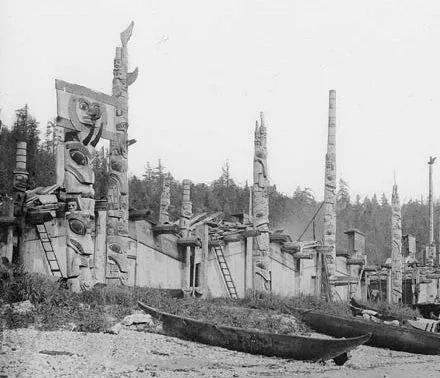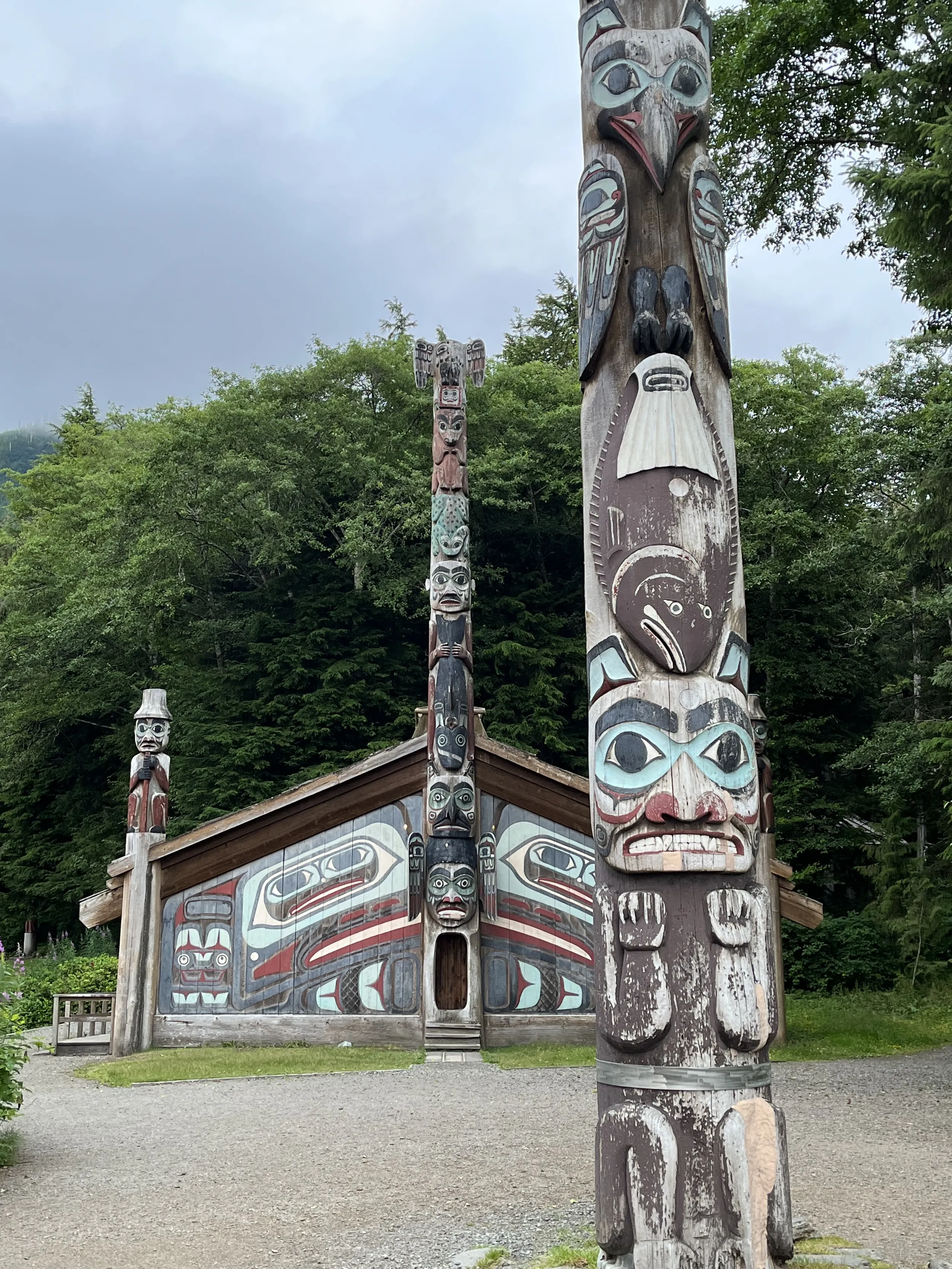Understanding Totem Poles
Totem poles have become some of the most iconic symbols of “Native American culture,” but it's important to understand their origin and to honor their ongoing significance for the clans to which they belong.

Totem poles carved by Charles Brown (Tlingit) in the 1940s for Totem Bight Park, Ketchikan, Alaska.
Image courtesy of Emily Moore
Jan 13, 2025
BY Emily Moore
"Totem poles” refer to monumental carvings made from tree trunks by Indigenous peoples from the northern Northwest Coast, in what is now Southeast Alaska and British Columbia. These impressive poles are still cherished and carved by Indigenous Nations like the Tlingit, Haida, and Tsimshian to tell the histories of their clans, honor ancestors, and record important events. In Lingít xʼéináx, the Tlingit language, monumental poles are known as kootéeyaa, “large object carved with a chisel or adze.” In Xʼaad kíl, the Haida language, they are gyáaʼaang, “man standing up”; and in Smʼalgyax, the Tsimshian language, they are ptsʼaan.
Totem poles have become some of the most iconic symbols of “Native American culture,” but it's important to understand their origin and to honor their ongoing significance for the clans to which they belong.
The English moniker of “totem pole” is the most common term for these carvings, but it is also misleading. “Totem” is derived from “dodem,” an Anishinaabe word from the Great Lakes region that references animals and other beings from which clans trace their direct descent. In contrast, figures carved on monumental poles on the Northwest Coast depict animals or other beings that ancestors encountered in the distant past and earned the right to use as identifying symbols for their descendants. These symbols, or crests, are carefully guarded as the property of clans and are still revered today. Because monumental poles feature at least one crest of the clan member that erected it, many scholars now use the term “crest pole” rather than “totem pole” to refer to monumental carvings from the Northwest Coast.

Skidegate Indian Village of the Haida tribe, ca. 1878. Skidegate Inlet, British Columbia, Canada.
Photo source: Wikimedia Commons
Contrary to popular conception, these poles were never objects of worship. Mortuary and memorial poles honor the dead, heraldic poles recall stories of clan history or the origins of world phenomena, house frontal and interior posts identify the crests of the house’s resident clan, and ridicule poles shame another clan or person for an unresolved offense.
The poles are carved from massive cedar trees that can reach 50 feet in height. A master carver and assistants carve the pole while it lies horizontally on the ground; later it is erected into its standing position by dozens of clan members using ropes (and sometimes, today, with the help of cranes). The raising of a monumental pole is cause for huge celebration and usually occurs as part of a “potlatch,” the English word for important, multi-day ceremonies on the Northwest Coast that mark major events like funerals or the naming of new clan leaders.
The impressive nature of monumental carvings on the Northwest Coast has long attracted the interest of non-Natives, and it is not surprising that artists far from the region copied their forms. Totem poles were especially popular in the United States during the 1930s and 1940s, when many Americans sought uniquely “American” art forms that could not be traced to Europe.
This was also a period when Native American cultures in general interested groups like the Boy Scouts, which strove to teach boys outdoor leadership skills that countered the “feminizing” effects of urbanization. While many of these groups claimed to honor Indigenous cultures by copying their art forms and cultural practices, the lack of understanding of the significance and ownership of crests led to many misappropriations.
Totem poles have become some of the most iconic symbols of “Native American culture,” but it is important to understand their origin in specific Indigenous Nations on the northern Northwest Coast, and to honor their ongoing significance for the clans to which they belong.

Totem poles carved by Charles Brown (Tlingit) in the 1940s for Totem Bight Park, Ketchikan, Alaska.
Photo courtesy of Emily Moore
Dr. Emily L. Moore is associate professor of art history at Colorado State University and associate curator of North American arts at the Gregory Allicar Museum of Art. She grew up in a settler family in Ketchikan, Alaska, and continues to work with Tlingit, Haida, and Tsimshian people to document their art and history.


